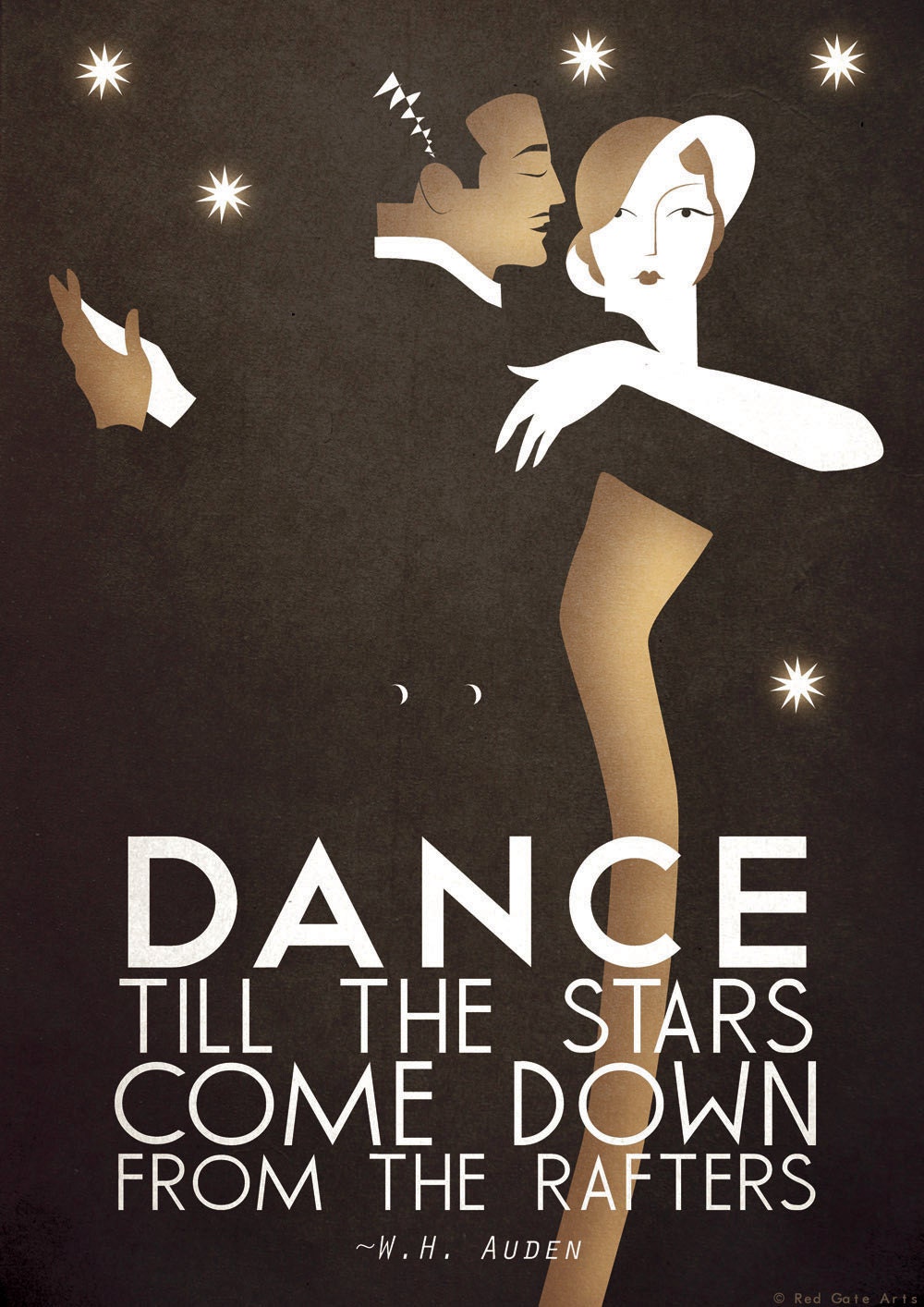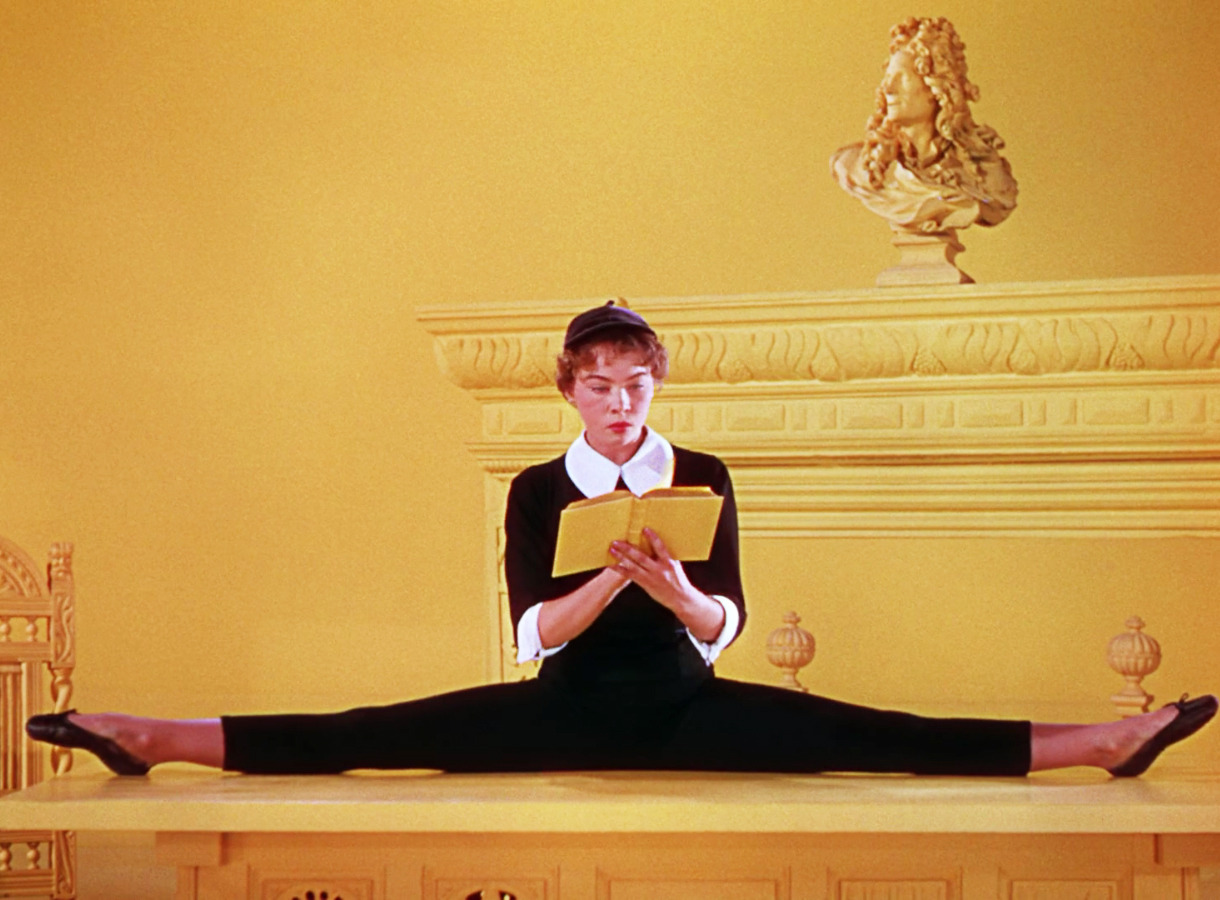
So You Think You Can Dance
According to a non-dancer (Emily Pau)
I honestly have never watched an entire episode until this review so…don’t hurt me! So, in case you all missed last week’s Top 14 performances, here is my take on the episode.
The Top 14 performed a beautiful opening number with all of the dancers dressed in gorgeous white flowing robes adorned with gold braces and crowns obviously paying tribute to the ancient Greeks. However, one of the dancers is dressed in a normal/ modern white outfit and the others perform their routine around him. The modern man is left standing in the middle with a gold-like paint on his pure white shirt as the others gather at his feet. This routine could be a symbolic tale of how the Greek gods blessed the human race with brilliant artistic skills and that this one man has been “artistically touched” by the gods. All in all it was a very interesting piece.
Team Bridget and Emilio were the first to perform that night and I have to say their routine was a little odd at first–a couple of demons on a mission from Hell to steal someone’s soul. Ok. At first their choreography looked like something out of Black Swan especially since Bridget kind of resembled Mila Kunis and I wasn’t that impressed. It wasn’t until their final product was complete that their jazzy dance moves and flashy red 1920s garb made the theme a fun and exciting dance routine!
Team Rudy and Tanisha’s stunning routine was absolutely breathtaking from beginning to end. It was a gorgeous story of seduction; it was like watching a contemporary Argentinean Tango. Rudy was definitely right when he said that you really can’t tell who is seducing whom. They were equally talented in their dancing and were perfectly synced throughout their performance. Everyone was completely wowed by their powerful choreography. That truly was an amazing routine!
Zack and Jacque, well more like “Count Zack and Lady Jacque,” were sensational with their hot vampire-ish routine. It was a wonderful twist to the Spanish Paso Doble as the judges mentioned but also seemed to give a slight nod to the dramatic American Tango. “Count” Zack did a wonderful job of being the vampire who brings the beautiful “Lady” Jacque back to life who doesn’t give in to his commanding yet enticing presence. Her striking twists and turns prove that she is just as powerful and is not easily won over by his devilish charm. Their constant battle of dominance was absolutely thrilling to watch to the point of not knowing who really “won” the battle. Perhaps it was a respectful tie…
Teddy and Emily did a great job taking everyone down the road of Broadway. Their opening moves were fantastic which wonderfully progressed to the tight leg work. It looked like it did a number on their thighs just from watching it. The couple tried their hardest to channel the flairs of Bob Fosse but considering this was a difficult routine to imitate I thought they did a decent job.
Jessica and Casey were the essence of perfection with their sweet country love story. A flawless routine that gave the judges chills with their “porch swing” turns and steady lifts. Casey did a wonderful job complimenting Jessica’s shy and gentle nature as the loving boyfriend who adores her very being. Their amazing chemistry spent “electro shocks” through the audience and judges. It was certainly a routine you would want to watch over and over again.
However, the Quick-Step styles of Carly and Serge undoubtedly possessed cat-like glides, slides and hops. Their little Charleston steps were so much fun to watch after seeing them practice so hard to perfect it. Serge and Carly were incredible as the flirty yet modest cats of the Quick-Step.
The final paring, Ricky and Valarie come together to create a slightly creepy story about a witch doctor bringing a voodoo doll to life. I was completely blown away by their insane hip-hop moves and I don’t really care for hip-hop. It was as if I could imagine puppet strings on Valarie’s arms and legs as Ricky perfectly controlled her gangling body throughout their marvelous routine.
I wasn’t too crazy about the solos except for one of two and they definitely should not have been in the bottom 6. However, I thought some of them were better dancers when they were with a partner instead of their solo. Without a doubt each of the dancers was amazingly talented, but like in anything some stand out more than others.
The seven ladies of the show performed a beautiful final routine in their fluid purple gowns. It was as if the choreographer was still using the Greek mythologies as a canvas for their stage drama. The ladies were breathtaking as they seemed to embody the world of the Muses. Even as a group, each dancer added her own special flair to the story. The seven dazzling “muses” constantly lifted each other up as if to symbolize the essence of sisterly love regardless of competition. It was a piece that could bring tears to your eyes.
Another tip of the hat to the Greeks was the final male group enactment of the seven lost souls of the sea. The men gave life to these isolate creatures of the sea with their wave-like upper body movements perfectly linked together similar to men in a row boat. Their flying jumps provided were just the right touch to give the audience the feel of a high-rolling tide sweeping them throughout the gloomy tale.
At first I really didn’t care for the show because I thought the stories were the typical “artsy” stories were everything had a meaning and unless you were a dancer you didn’t really get it. Also, I thought some of the dance routines were a little predictable in how the ladies would move their hips, thighs, bum and whatever else the choreographers wanted to emphasize.
I totally understand that dance is like that sometimes and I have to admit it’s a little fun to dance like that. But I’ve also seen dance routines where it is still sensual but respectful.
I did like how the girls were seen outside of the dance studio. They showed how many dancers led normal lives that are not constantly surrounded by dancing. One girl worked at a grocery store and another was a tomboy. I was very glad to see that!
The men were even stereotypical in the way they carried themselves because almost all of them seemed to have the same metro-sexual look. Not every male dancer is like that, that’s seems to be what Hollywood wants to portray. I know several guys who are professional dancers and who are very masculine in their dancing and stature. They are nothing like the guys on TV.
The costumes, however, were gorgeous! I wanted a couple of them but have no place to wear them.
All in all it was a fun show to watch. I didn’t like it that much after the opening number and even a little bit of the first routine but I quickly enjoyed watching the ups and downs of the show.











